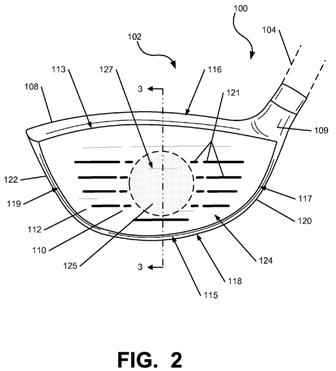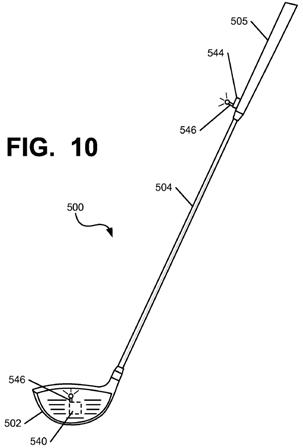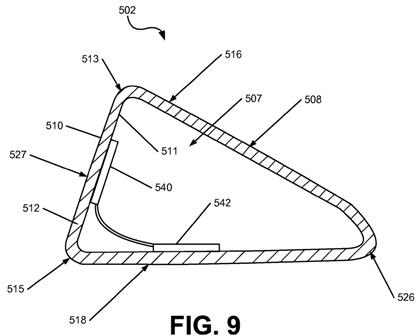Well Nike has recently patented a clubface that can change its “trampoline effect” depending on how hot the face is. While cool, this patent does bring up some interesting thoughts and questions. What we learned from this patent:
- Depending on swing speed, you can actually increase the temperature of the face by 0.5-5 degrees Celsius (sorry, we’re Canadian)
- Nike Golf can develop a face that can actually rebound more when heated (isn’t all metal more pliable when heated?)
- Nike has yet to decide whether to add a heating element and on/off switch to the clubface to facilitate the extra trampoline effect (have fun with this one USGA)
Questions we have:
- Okay, the clubface heats up at impact, but by the time this happens, the ball will have been long gone. And unless you are on the range or hitting 3 from the tee – this heat will long dissipate before your next driver swing.
- Heating element and on/off switch… how easily could this be abused?
- How many yards are we talking here? Would the USGA have to test the club with the switch on / off? If the COR max is still 0.83, that means even when heated the COR would have to be at 0.83 – which is standard for most drivers these days.
While cool, this screams marketing to me, and hopefully, you all see through this if Nike decides to bring this beauty to market. See the full post here and some images below.
“[0065] In general, FIGS. 1-3 illustrate a head 102 that has a face 112 that is at least partially formed of a material with a thermally variable modulus, meaning that the elastic modulus of the material changes based on temperature. An impact between the face 112 and the ball 106 generates an amount of heat, at least some of which is absorbed by the face 112, changing the temperature of the face 112 at least in an area proximate the impact. The material may have a thermally-variable modulus that causes the modulus to change to a significant degree due to the heat absorbed by the face 112 during impact. In one embodiment, the energy of an impact of a ball on the face 112 is between 10-100 Joules, and the resultant temperature rise of the face may be between 0.1 degrees C and 5 degrees C, depending on materials, swing speed, and other conditions. FIG. 2 schematically illustrates an impact zone 125 between the ball 106 and the face 112, which causes the face 112 to deform within the impact zone 125 and generates heat that is absorbed by the portions of the face 112 within the impact zone 125. It is understood that the impact zone 125 shown in FIGS. 2-3 corresponds to an impact at or around the area of highest response 127 of the face 112, which, in a driver-type club head 102, is typically at or around the geometric center of the face 112. FIG. 3 illustrates deformation of the face 112 caused by the impact. It is understood that the degree of deformation of the face 112 in FIG. 3 may be exaggerated for the purposes of showing detail. In one embodiment, the modulus of at least part of the area of the face 112 local to the impact zone 125 may change at least 10% due to heat and pressure generated by an impact of the ball 106 on the ball striking surface 110 at a particular swing speed during impact, as described below. In another embodiment, the modulus may change up to 50% at high swing speeds.”





